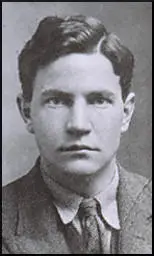

Later that day Gouzenko applied for Canadian citizenship, then wandered around Ottawa, unsuccessfully seeking asylum. "It was like a bomb on top of everything else," King wrote, "and one could not say how serious it might be or where it might lead." The next morning, he went back to the Journal and spoke to reporter Elizabeth Fraser.īy noon, the Canadian government was aware of Gouzenko and Mackenzie King was informed of the incident.Ĭanada was about to meet with the Soviets, Britain, France and the United States to discuss and construct a post-war peace, and King was worried that this scandal would damage international relations. The editor told him to go to the police, but Gouzenko went to the Department of Justice instead, which was closed. Well, that didnt ring a bell with me because World War II was over and we were not at war with Russia." "The first words he spoke were: 'Its war. He confronted the night editor, Chester Frowde. On September 5, 1945, Gouzenko stuffed 109 documents under his shirt and walked to the newsroom of the Ottawa Journal. The Soviets were trying to get information about North American technology including the atom bomb. It involved civil servants, scientists, even a Member of Parliament. The information revealed a spy ring had operated in Canada during the war. "During the course of about half a month, I examined the materials so as to select the best ones that would disclose the operative work, leaving the informational telegrams on one side," he wrote, "the telegrams which I wished to take out I marked by bending over slightly one of the corners." He plotted his escape for several weeks, stealing classified material that he could use to ingratiate himself with his Canadian hosts. In 1945, Gouzenko received orders to return to the Soviet Union, but disillusioned with his communist homeland and attracted by life in the West, he decided to stay. Gouzenko had spent part of the Second World War at the Soviet Embassy in Canada, as a cipher clerk, encoding communications to Moscow. The man who touched off the political crisis was Igor Gouzenko.

But this event would help fuel anti-Communist sentiments throughout the western world. And the Soviet Union had been an ally to the West during the war. Hitler's fascist forces had just been defeated in the Second World War. It's Russia," he told the night editor of the Ottawa Journal. Pictured here, Gouzenko wears a hood to conceal his identity while appearing on television in 1966. In 1945, Igor Gouzenko and his family received new identities from the Canadian government after the young Russian Embassy cipher clerk announced he had proof of a widespread spy ring in Canada. In September 1945, a young Russian man symbolically ushered in the Cold War when he walked into Ottawa newsroom and announced he had proof of a widespread Soviet spy ring operating in Canada. News of a widespread spy ring in Canada cools relations with the Soviet Union


 0 kommentar(er)
0 kommentar(er)
